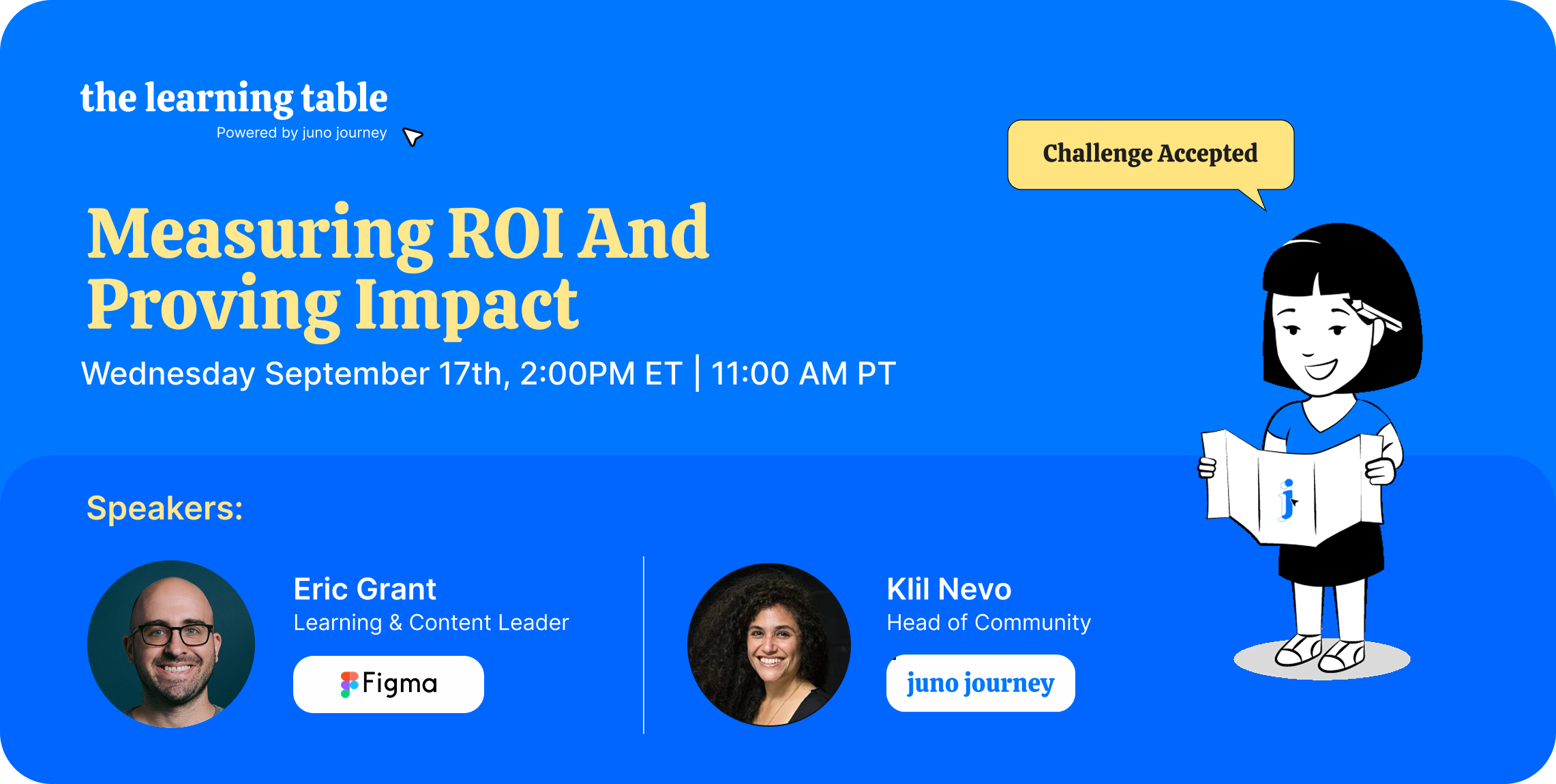
ICYMI: Challenge Accepted #4 - Measuring ROI and proving impact in L&D
ICYMI: Measuring ROI and Proving Impact in L&D with Eric Grant
If you’ve worked in L&D long enough, you’ve been asked the question: “But what’s the ROI?”
For our third Challenge Accepted session, we decided to tackle it head-on. Measuring impact is often the least glamorous part of our work, but it’s the key to securing buy-in, resources, and trust at every level of the business.
This time, we invited Eric Grant, Learning & Content Leader at Figma, to help us break down how to move from smile sheets to real influence.
Setting the Stage with Eric Grant
Eric has built learning functions at companies like Uber and Figma, and even went back to grad school during COVID to study data science—specifically to answer the question of how learning gets measured. He describes himself as “a little data-obsessed,” and that combination of L&D and analytics expertise made him the perfect guide for this conversation.
Eric opened with a bold take: “The commoditization of behavioral data is coming. In 12–18 months, every organization will have an enormous dataset on how employees actually work—emails sent, meetings joined, Slack messages written. The question will be: what do we do with it?”
That vision reframed the discussion. Instead of worrying about whether data will ever be available, the real challenge becomes: How do L&D teams prepare to use it, interpret it, and prove their influence?
From Theory to Practice: Making Measurement Useful
Eric emphasized that while performance data is the gold standard, most L&D teams today live in the world of surveys and assessments. That’s not a weakness—it’s training ground. The rigor we apply to survey design now will pay off when richer datasets arrive.
Some of his top tips:
- Ask the one question that matters: “Will this make you better at your job?”
- Lean into variation. A global average of 4.2/5 tells you little. But if managers score 4.5 and ICs 3.1, you have an insight leaders care about.
- Don’t rely on anonymous surveys. Without demographic slices (tenure, role, team), you lose the ability to find variation.
- Pair confidence with knowledge. Asking “How confident are you?” alongside an assessment uncovers whether learners are wrong but confident (risky) or right but unsure (a coaching opportunity).
- Tell stories, not stats. Data doesn’t stick unless it’s packaged as a story, a headline, or a graph showing a clear trend.
- And one very practical reminder: “Don’t use pie charts. Ever.” Stick with line, bar, or scatter—leaders want to see trends over time.
Facing the Hard Questions
The Q&A was rich with challenges practitioners face every day:
- Leadership Development & Attribution – “How do we prove our training influenced business outcomes when there’s no direct line?”
Eric’s advice: focus on contribution, not causation. Show before/after behavior signals, and frame L&D as a catalyst for change, not the sole driver. - Balancing Measurement vs. Delivery – “How do we justify the time spent measuring when we’re already stretched thin?”
His take: selectively measure. You don’t need data for every one-hour training. Invest in measurement where the stakes and visibility are highest. - Soft Skills & Business Impact – “How do you connect feedback training or influence skills to ROI?”
Eric admitted it’s tough today, but the future will bring quantifiable “communication profiles.” In the meantime, focus on measurable proxies: frequency of feedback, confidence levels, quality ratings from direct reports. - Simulations & AI – Participants raised the role of AI-powered simulations. Eric sees them as powerful practice tools, but ultimately “still one column in a dataset.” The real test remains: does simulation success translate to performance change?
Closing with Realism and Optimism
Eric wrapped with a reminder:
“Financial ROI is powerful, but credibility matters more. Don’t stretch beyond what the data supports. Present assumptions with asterisks, tell a story leaders can trust, and position L&D as the team that drives behavior change.”
The session proved what Challenge Accepted is all about: not polished decks, but candid conversations that push us forward together. ROI may never be neat and tidy, but with the right tools, questions, and storytelling, L&D can secure its place as a strategic driver of business performance.
👉 Recording & slides coming soon. Stay tuned for our next Challenge Accepted session on building leadership skills next month.